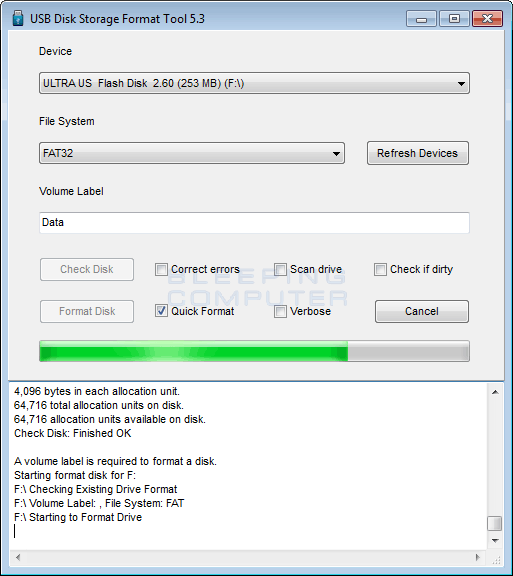

- #Force format drive mac mac os
- #Force format drive mac install
- #Force format drive mac code
- #Force format drive mac password
- #Force format drive mac windows
This will bring up another window that enables you to choose how you’d like the drive to be formatted, with a slider ranging from Fastest to Most Secure.
#Force format drive mac mac os
This may be APFS, or it may be Mac OS Extended (Journaled) depending on how the drive is currently formatted and whether you using macOS High Sierra or an older version of the OS.
#Force format drive mac windows
Windows can read HFS+ drives but can’t write to them. There’s also an option of MacOS Extended (Case-sensitive, Journaled, Encrypted) if you are likely to have file names that require capital letters.
#Force format drive mac password
You can encrypt your drive and require a password to access it. There’s also the option of MacOS Extended (Journaled, Encrypted) which is a good choice if you are likely to be carrying your laptop or external drive around and don’t want anyone to access the contents of the drive should you accidentally lose it. If your Mac isn’t updated to High Sierra it will offer MacOS Extended as the default. MacOS Extended (Journaled) (also known as HFS+) – APFS replaced MacOS Extended as the default file system on the Mac when Apple launched High Sierra in 2017. For now we’d advise against formatting in APFS because it won’t be readable by Macs that aren’t running High Sierra, but this may not matter to you. And it currently only works on SSDs or Flash storage. But it won’t be readable or usable by a Mac that isn’t running High Sierra, and Windows or Linux machines won’t be able to read or write either. You can choose an encrypted version and a case-sensitive version. There are a number of things that are good about it – such as it being more efficient and more reliable. We’ll describe them below, and you’ll be able to choose the one that suits you.ĪPFS (Apple File System) – This is the new file system that Apple bought to Macs with High Sierra and it will be the default if you are using that version of macOS. There are a few file formats that you can use but the one that’s right for your circumstances depends very much on what you are going to be using the drive for.
#Force format drive mac install
Making a bootable macOS install drive (covered here) and if you areĭoing a clean install of macOS. Other reasons you might want to use Disk Utility include Press "Enter." Input your administrator credentials and confirm the action, if prompted.Using Disk Utility on a Mac here.
#Force format drive mac code
Highlight the code and press "Command-C" to copy the edited code to the clipboard.Ĭlick on the Terminal prompt and press "Command-V" to paste the code. If you want to reformat, replace "eraseDisk" with "reformat" and delete the "JHFS+" and "diskname" parts of the command. Replace "diskidentifier" with the Disk Identifier name retrieved from Disk Utility. Change "diskname" to the new name for the disk, or type "%noformat%" to leave the name blank. Change "JHFS+" to "HFS+" if you want a volume that is not journaled.

Type "diskutil eraseDisk JHFS+ diskname diskidentifier" into the TextEdit document.Įdit the "diskutil eraseDisk JHFS+ diskname diskidentifier" code in TextEdit.Ĭhange "eraseDisk" to "secureErase" if you want to securely erase the disk. Click "Go" and double-click "TextEdit" to open the TextEdit application. Creating and Using a Terminal Format CommandĬlick "Go," select "Go to Folder." and type "/Applications/TextEdit" into the text field.


 0 kommentar(er)
0 kommentar(er)
